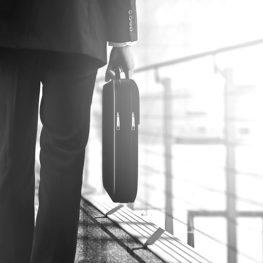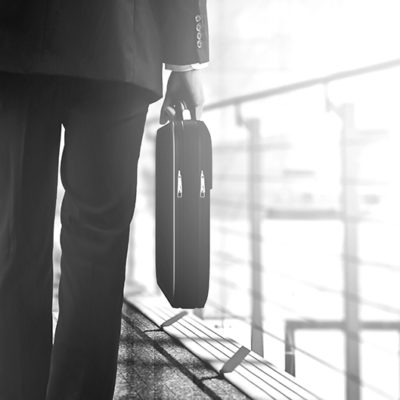
Jury Nullification: What’s Left After United States v. Manzano

Federal juries have the power to “nullify,” i.e., to acquit a criminal defendant even when the facts and the law support a conviction. Time and again, courts have recognized and even reaffirmed the power of nullification in our jury system. And yet, a divided panel of the Court of Appeals for the Second Circuit recently clarified how little defense lawyers and trial judges can do to enable jury nullification. In the words of the majority opinion in United States v. Manzano, Dkt. No. 18-3430 (2d Cir. Dec. 18, 2019): “we emphatically reject the rule … that district courts are free to permit jury nullification arguments whenever they feel justice so requires.”
The Second Circuit in Manzano made clear that defense counsel cannot explicitly request that a jury nullify a criminal prosecution even when basic fairness would warrant such a result. Nonetheless, defense counsel can still seek to introduce evidence that a fair-minded jury might employ in exercising its power to nullify charges brought by the government. The challenge for the creative trial lawyer is finding a proper evidentiary basis for the admission of evidence that a jury may also use to exercise its power to nullify.
The decision in Manzano is fascinating on many levels as it highlights the breadth of prosecutorial discretion in charging decisions and, at times, the powerlessness of our federal courts to reign in the government when prosecutors overreach. The case involved a 31-year-old male defendant, who engaged in a sexual relationship with a fifteen-year-old girl (“M.M.”). The State of Connecticut investigated the incident as a statutory rape case. In the course of the investigation, investigators learned that the defendant had video-taped the defendant and M.M. engaged in sexually explicit conduct. The Second Circuit described the circumstances as follows:
M.M. knew that [the defendant] was recording the video at the time, and Manzano did not threaten her or force her to engage in the sexual conduct. Nonetheless, M.M. was 15 years old when the video was recorded and therefore was incapable of consenting to sexual conduct as a matter of law. Although [the defendant] did not distribute the video, he uploaded it using internet servers located outside of Connecticut, to his personal Google Photos folder.
The United States Attorney’s Office for the District of Connecticut decided to charge the defendant with two counts, each carrying a mandatory prison term: (1) production of child pornography for which the defendant faced a mandatory minimum of fifteen years in prison; and (2) transportation of child pornography for which the defendant faced a mandatory minimum of five years in prison.
The defense moved for permission to argue for jury nullification and to introduce evidence of the consequences of a conviction. In response, the District Judge expressed his concerns about the fairness of the prosecution and permitted defense counsel to argue for jury nullification. The District Judge explained as follows:
This is a shocking case. This is a case that calls for jury nullification. I am absolutely stunned that this case, with a 15-year mandatory minimum, has been brought by the government. … I am going to be allowed no discretion at sentencing to consider the seriousness or the lack [of] seriousness of this conduct, and it is extremely unfortunate that the power of the government has been used in this way, to what end I’m not sure.
The District Judge drew a distinction between encouraging jury nullification, which the Judge admitted he could not do, and permitting defense counsel to argue to the jury that it should acquit the defendant as a matter of fairness.
In response to the District Court’s ruling, the Government filed an emergency petition to the Second Circuit for a writ of mandamus challenging the District Judge’s decision. The trial was postponed pending the Second Circuit’s decision. In a two-to-one decision written by Judge Richard Sullivan, a panel of the Second Circuit issued a mandamus holding that the Government has a “clear and indisputable right” to a trial in which defense counsel is not permitted to argue jury nullification. The majority opinion explained that district courts must not only avoid encouraging jury nullification, but must go a step further and “forestall or prevent” jury nullification. The Second Circuit also shut down any notion that a district court may permit jury nullification under the umbrella of the federal court’s inherent supervisory powers.1
Notwithstanding the majority’s clear rejection of defense counsel’s desire to argue for jury nullification, the Court declined to rule on the factual basis for the defendant’s proposed nullification argument, i.e., that the defendant faced a mandatory minimum of fifteen years in prison if convicted of production of child pornography. The majority explained that there may be a proper, non-nullification purpose for admitting evidence of the defendant’s exposure to the harsh mandatory minimum sentence. The Court suggested that the sentencing consequences could potentially be relevant to the alleged victim’s bias or motive. On this basis, the Second Circuit rejected the Government’s effort to preclude (via mandamus) evidence as to the sentencing consequences that the defendant faced.
So, what is left of jury nullification after the Second Circuit’s decision in Manzano? First and foremost, the court in Manzano reaffirmed the principle that federal juries retain the power to nullify criminal prosecutions that are not fairly brought against defendants. It follows that defense attorneys, while unable to explicitly request jury nullification, can seek to admit evidence that jurors may believe justifies the exercise of their power to nullify.
The Second Circuit’s decision in Manzano provides a good illustration of what defense attorneys can and cannot do. Jurors are often instructed that they should not consider what punishment a defendant may face. But the Second Circuit noted a potential and proper basis by which to admit such evidence. The Court, in Manzano, held that there is no “absolute prohibition” on exposing a jury to sentencing consequences. The Court further referenced the relevance of the evidence to the victim’s bias or improper motive particularly since the victim had posted the Government’s press release on Facebook. The Court left it to the District Judge to determine on remand whether, under the balancing test of Rule 403, evidence of the potential sentencing consequences was admissible.
In short, nullification still has a place in the federal jury system even if trial judges and defense attorneys cannot specifically encourage it and even though trial judges must attempt to “prevent or forestall” it. Effective trial counsel must be mindful of the power of federal juries to nullify when formulating trial strategy – particularly when considering how to admit favorable evidence that may incidentally shed light on a potential injustice for the jury to rectify.
1The dissenting opinion, written by Judge Barrington Parker, does not offer much further discussion of the role jury nullification plays in federal trials. Instead, noting that whether the District Judge “went too far is debatable,” the dissent expressed disagreement with the use of mandamus by the majority. The dissenting judge further supported the District Judge’s expression of concern about the Government’s charging decision.

